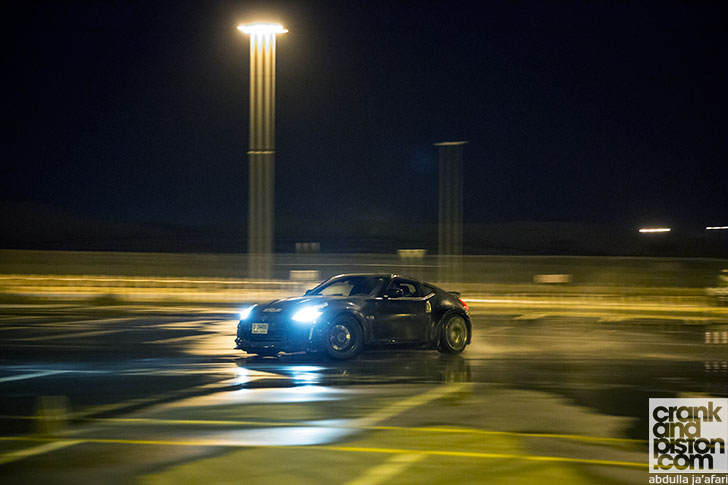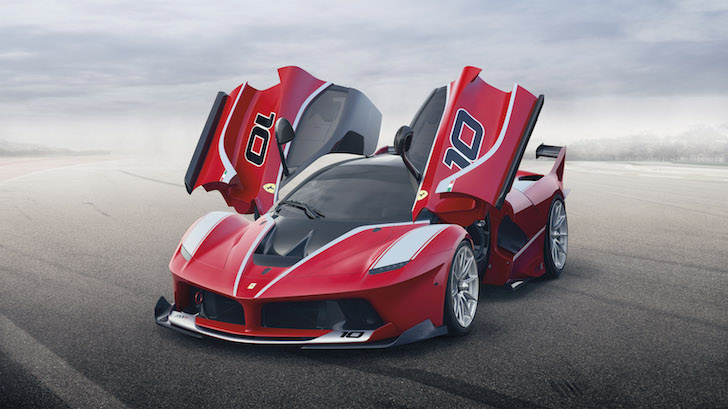One of the UAE’s few motorsport feeder series takes a bold step for 2014/2015 with a new category for gentlemen drivers, but it’s not about to change the direction of the series. crankandpiston catches up with series co-ordinator Barry Hope.

“We’ve thought a lot about this because we don’t want the Master Class to get in the way of the young drivers. I don’t want to lose the credibility of the series, but we think it’s a good direction that still holds true to Formula Gulf 1000.”
Pretty adamant there. For the past three years Barry Hope and Dubai-based GulfSport Racing have been co-ordinating Formula Gulf 1000, the one-make single seater series that fills the void between karting and single seater racing in the UAE. And so far things have been going quite well. Young guns from both the series’ debut and sophomore seasons have taken their decisive steps up the motorsport ladder. Season one (’11/’12) Champion Joe Ghanem raced in the hotly contested Formula Renault UK 2.0 series, while season two (’12/’13) GulfSport Trophy winner Natasha Seatter has already made her Porsche Carrera Cup Asia bow in fine style. Due in no small part to the experienced garnered from FGulf, it’s worth noting. Season three vice champion Saeed Bintouq (UAE) meanwhile has been selected to compete for the Citroen Rally team in the Middle East Rally Championship.
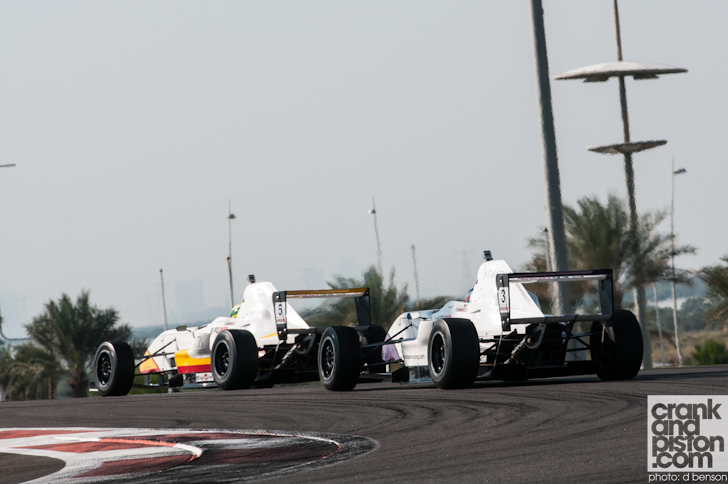
For season four though, things are changing. With most of the ‘current’ field moving on for 2014, new names on the grid are a given. Alongside them for the first time will be the Masters Class, a category for discerning Gentlemen Drivers keen to give slicks and wings a go.
“We’ve been approached by a number of people asking ‘can I race?’”, Barry explains. “Initially we said ‘no, it’s just for juniors’, but then we thought, well, why not? The single seater is like the ultimate drive: it’s very raw. There’s no electronics, there’s a sequential gearbox, and you’ve really got to drive it properly.
“There’s a chap here – I won’t mention his name – but he’s been racing in the region for a number of years and he came along to do the Formula Gulf training. He’d raced saloon cars but it was the first time he’d raced a single seater. And all he said was ‘wow!’ He was so enthralled by the technicality and the sheer challenge of driving a single seater car that weighs only 400kg. It just got us thinking and the whole idea kind of went from there.”

So what does the new class mean if not a direction change for the entry-level single seater series? Stability for one. Competitors in the new Masters Class will be entitled to use their newly acquired single seaters at assigned track and test days throughout the year as well as learn from GulfSport’s myriad race engineers and mechanics alongside their younger counterparts in the Championship Class.
“Stability’s kind of a bi-product. Junior drivers are likely to race with us for one or two seasons max, so they don’t want to buy a car. They arrive and drive, and that’s what happens throughout their young professional career. But when you’re a gentleman driver, enjoy driving and are located regionally, you tend to own a car. It’s cheaper, you don’t have to pay for arrive and drive – actually the Masters Class reduces that cost considerably – and you’ve got an asset at the end of it. They can sell the car back to us at the end of the year if they want or keep on competing.

“But that doesn’t make sense to a young driver. Last season we ran seven drivers throughout the season, and three of them were flying in! We’re hoping this will produce more interest regionally. The drivers that we’ve had so far have all been aged from 16 to 22. Most – not all, but most – have competed in Formula Gulf because they’re serious. They’ve excelled in karting and they fancy their chances of becoming a professional racing driver, which is fine. So the series is still very much geared to do that.”
There’s that focus on young driver development again, a concept that goes much further than words alone. Each driver, regardless of class, competes using the same Ralph Firman (formerly Van Diemen) FG11 single seater. No ifs. No buts. That means a 160bhp 1000cc four-cylinder Suzuki GSXR engine, a six-speed sequential gearbox, AP Racing calipers and pushrod suspension for honed track use. Neither class gains the advantage, and it’s therefore up to the drivers to prove their worth on-track. For the young guns, that’s particularly important if they want to make that next rung.
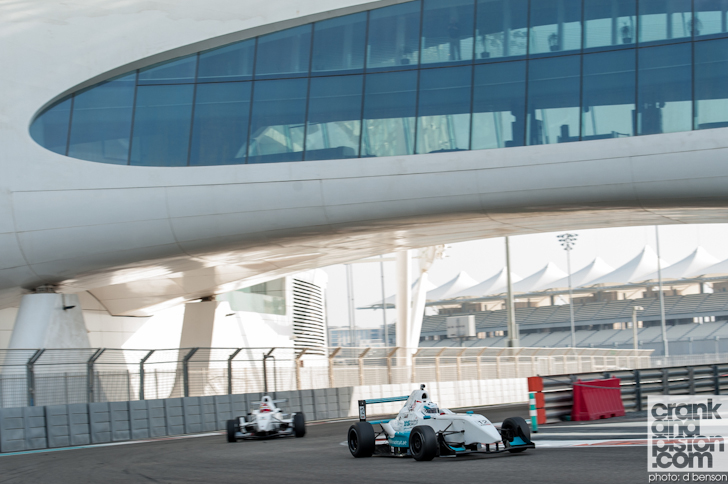
“We still believe very deeply in this idea of a level playing field for drivers. There’s nothing to change on the car, so the only thing they can do is adapt their style and as a result become better drivers. We figured we’d do the same thing with the more experienced Masters as well to fully give them the experience.
“They’ll share the same mechanics too. For every couple of cars we add to the grid we’ll probably have to hire another mechanic, but you just don’t need one mechanic per car. Take anything like Formula Renault or BRDC Formula 4. Every driver is probably paying for five or six people. And that’s why it’s so expensive. We’ve gone the opposite way to keep the costs down, and it works really well.”

Motorsport in the region may still be in its relative infancy but sponsorship remains a key issue, a contributing factor to low grid numbers across the UAE’s racing campaigns. The Masters Class is just one area of development for Formula Gulf though. The team are introducing a new simulator which allows competitors to put racing theories to the test without the risk of thumping $60,000 of single seater into the Autodrome’s concrete barriers. Extensive training could also lead to early races being much more competitive and further interest being tweaked as a result.
There is one tentative issue though with the new Masters Class. What happens when you throw a group of relatively inexperienced young guns, keen to show their speed against a group of established GT racers stepping foot into the single seater domain for the first time? Something presumably has to give…
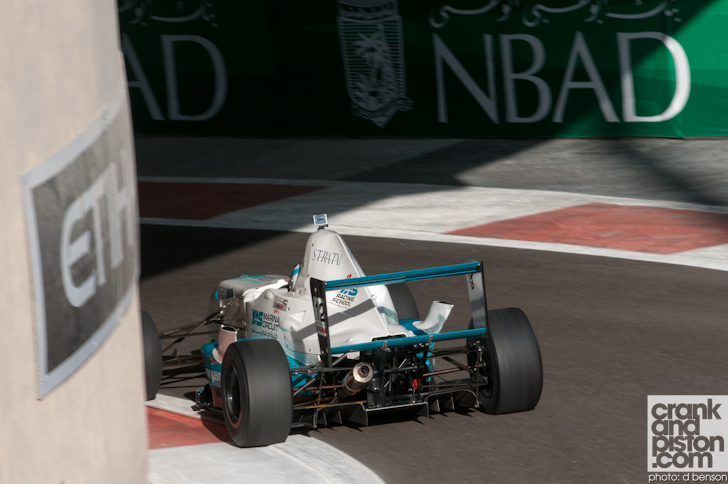
“I don’t think so. In fact I think the opposite. Overall I think the Natasha (Seatter)s and the Tom (Bale)s will be quicker because they’re more intense in terms of what they’re doing. Gentlemen drivers tend to have a slightly more relaxed attitude, but we are only taking experienced drivers. You won’t find anybody 20 seconds a lap off the pace. Anybody who wants to compete in the Masters has to have a licence and have previous race experience. So they’ll definitely be out there mixing it with the young guys. I suspect the junior drivers will be quicker, but it will still be close enough that the competition is always high. For the younger drivers, I think it’s a perfect learning environment.”
Two champions are due to be crowned then for the 2014/2015 Formula Gulf season, which kicks off this October. By season’s end, we’ll see if the students have become the Masters.
– Shots courtesy of David Benson


